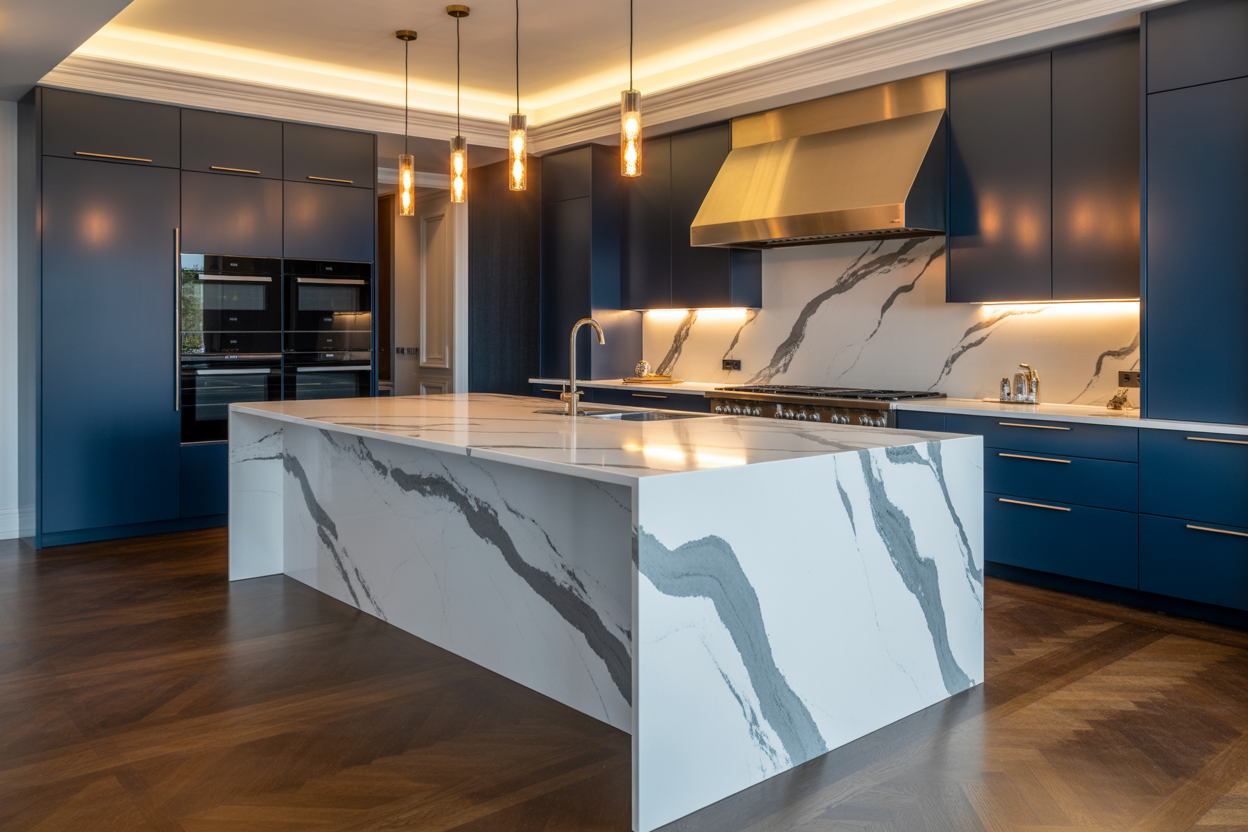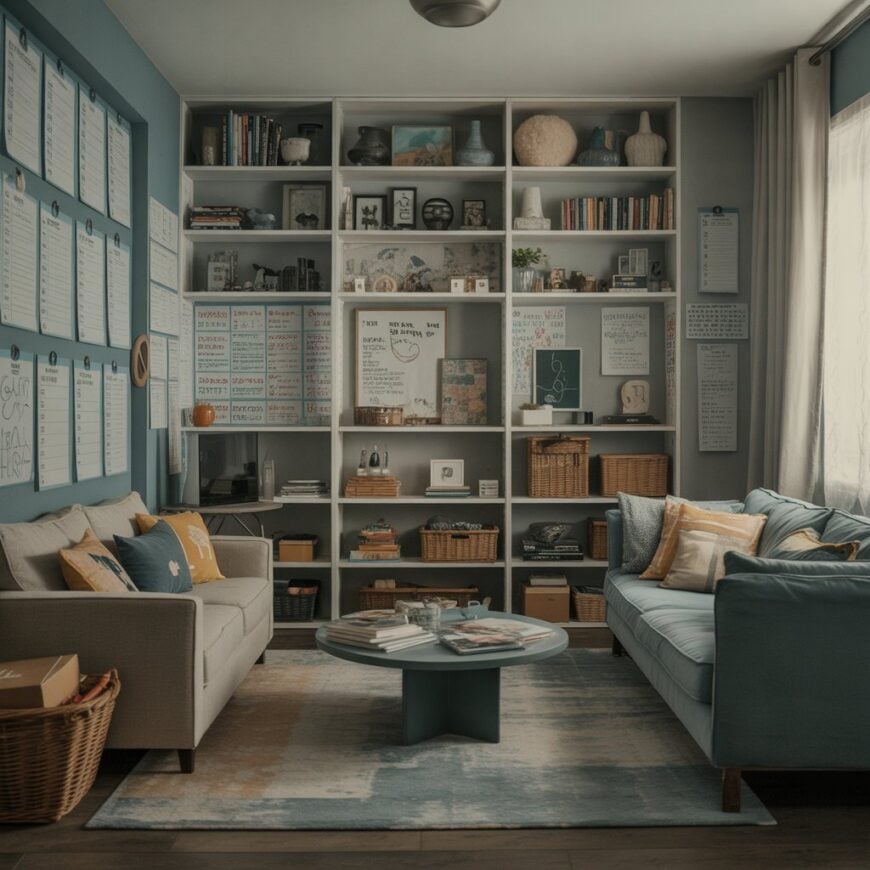
The way your space is arranged affects more than just aesthetics. Poor lighting, cluttered surfaces, blocked natural light, and uncomfortable furniture can all create subtle but persistent stress triggers. When your environment constantly demands mental energy to navigate or causes physical discomfort, it prevents you from truly relaxing in your own home.
AI usage: This post is theoretical in nature and so images used were created with the assistance of AI (Ideogram) in order to get relevant images.
In order to come up with the very specific design ideas, we create most designs with the assistance of state-of-the-art AI interior design software.
17. Rooms with inconsistent or mismatched lighting sources

When anxiety drives your lighting choices, you end up with a patchwork of fixtures that clash instead of being calm. A bright overhead light beside a dim table lamp creates jarring contrasts that make the whole room feel off.
Your anxious brain probably thought more lights meant better lighting. Instead, you’ve created glare next to deep shadows, so the space feels unbalanced and uncomfortable.
Mixing warm yellow bulbs with cool white ones adds to the unease. From the doorway, you’ll see harsh light pools beside inky corners. It’s all reactive, not planned—chaos instead of soft, even, soothing light.
This scattered approach to lighting happens when you add fixtures reactively rather than planning cohesively. Each new lamp or light was a quick fix for a dark corner, not part of an overall design strategy.
The result feels chaotic rather than calming. Your rooms lack the smooth, even illumination that creates true comfort and visual harmony.
16. Uncomfortable furniture causing constant physical unease

Your body knows when your furniture is wrong, even if your brain hasn’t caught up. That couch that looked perfect in the showroom may be quietly wrecking your comfort at home.
Seats without proper support strain your back, hips, and neck. You shift nonstop, trying to find a position that doesn’t hurt. Hard cushions, awkward angles, and cheap padding force your muscles to work overtime.
Ergonomics matter more than aesthetics. When your furniture fights your natural posture, your nervous system stays on alert. Restlessness, irritability, and tension can all trace back to one thing: a home that doesn’t physically support you.
15. Heavy curtains that block out natural sunlight
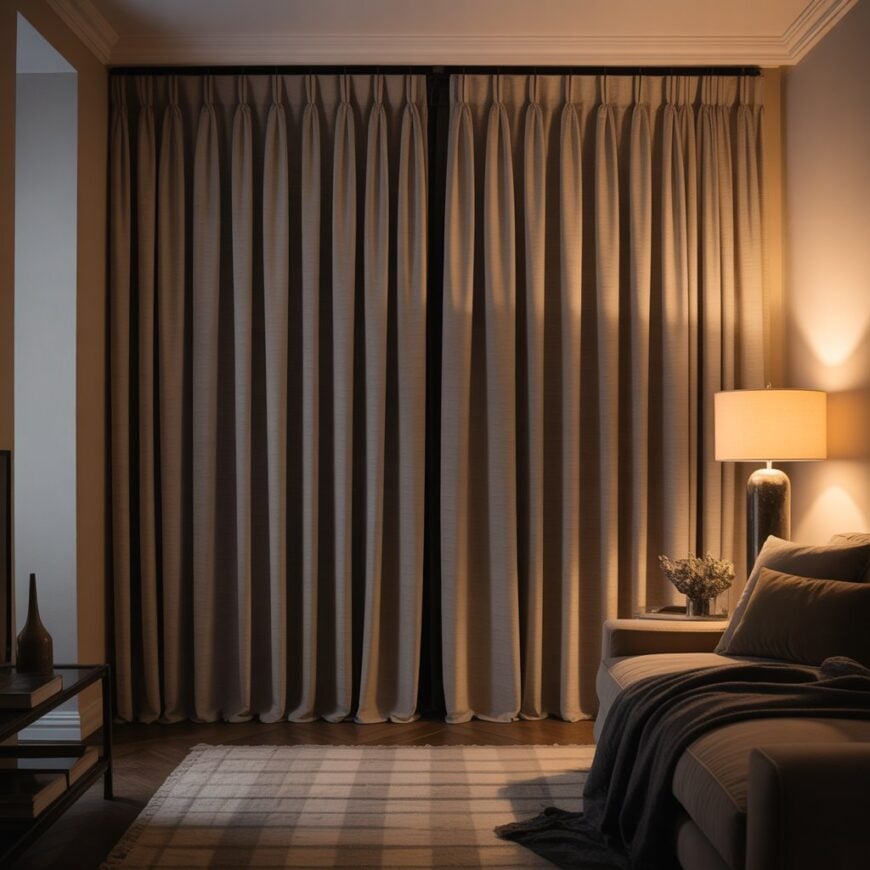
Those thick, dark curtains might feel like privacy and safety, but they can quietly turn your home into a cave. When anxiety is in charge, blackout panels stop being a sleep tool and become a shield against the outside world.
Blocking natural light disrupts your circadian rhythm and flattens your mood. Rooms feel closed off, protected, but also strangely lifeless.
Heavy fabrics like velvet or canvas don’t just block light; they muffle sound and deepen the cocoon effect. If every window is covered in dense, light-killing drapes, it’s worth asking: are you decorating for comfort—or hiding from your own space?
14. Unread mail or paperwork accumulating visibly

Those piles of mail on your counter or dining table aren’t just clutter—they’re stress you can see. Anxiety makes sorting feel overwhelming, so envelopes and forms stack up where you dropped them “for now.”
Every glance at the pile reminds you there’s something important buried in there… somewhere. You meant to create a filing system, but avoidance felt easier in the moment.
Over time, the stack becomes a monument to tasks undone. Your home starts to feel like a to-do list instead of a place to rest. That visible paper clutter keeps your brain quietly buzzing with guilt and worry.
13. Lack of natural elements like plants or wood textures
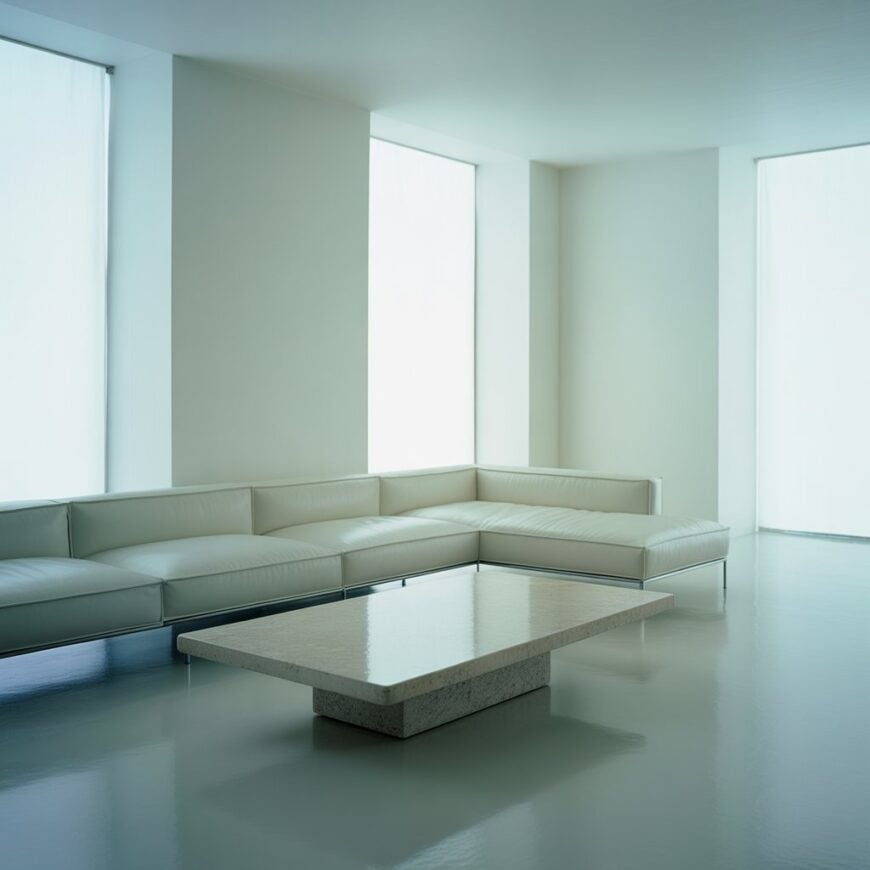
If your home feels oddly sterile, anxiety may have steered you toward “safe,” overly polished choices. Rooms without plants, wood, or natural textures can look clean—but feel strangely lifeless.
Natural materials like wood add warmth through grain, variation, and softness. Plants bring movement, growth, and a sense of connection to something living.
Without them, you’re surrounded by cold surfaces and synthetics that don’t ground your nervous system. The space can start to feel more like a showroom than a sanctuary.
Even a few wooden accents or easy-care plants can shift the energy dramatically, signaling comfort, safety, and calm to your brain.
12. Too many small, conflicting decorative items causing visual chaos
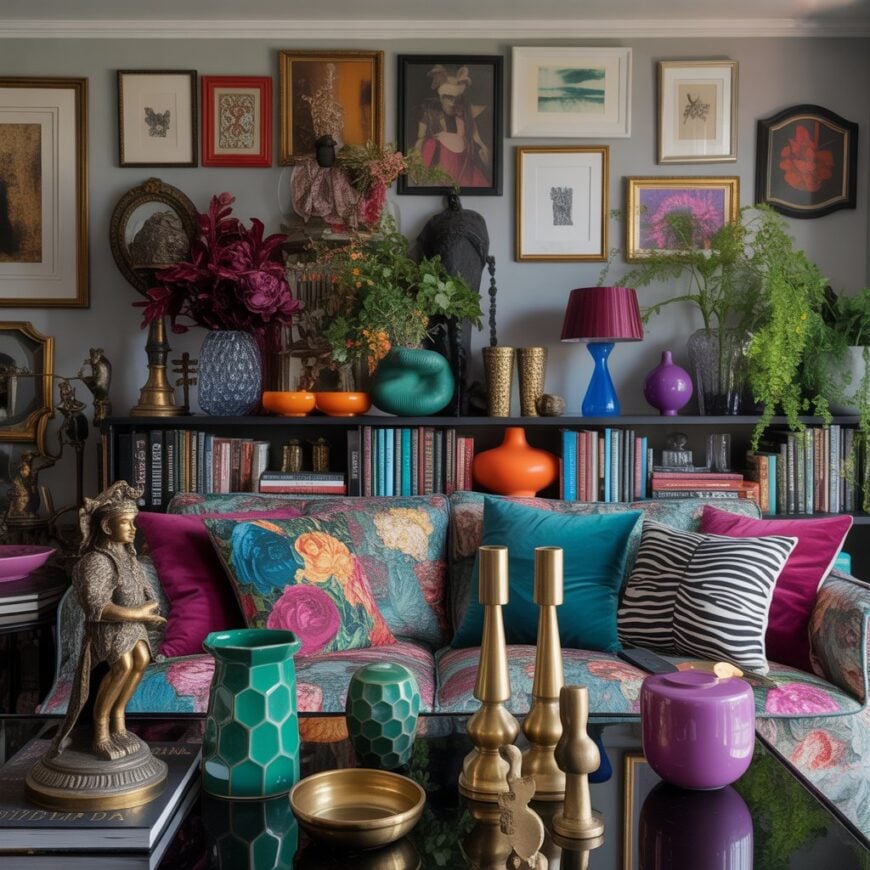
When anxiety pushes you to keep buying “little things” for comfort, every surface becomes crowded. Your coffee table, shelves, and dresser fill with candles, trinkets, and frames that don’t really relate.
Instead of feeling cozy, the room feels busy. Your eyes jump from object to object, never finding a place to rest. Conflicting colors, patterns, and shapes overload your brain and increase mental fatigue.
Many of these pieces were probably impulse buys from stressful days. Try an experiment: remove half, group what’s left, and leave some empty space. You’ll notice the room—and your nervous system—exhale.
11. A corner or space that feels cold or unnaturally empty

Almost every home has that one corner that feels strangely dead. Nothing lives there—no chair, no plant, no art—just empty space that somehow feels wrong instead of peaceful.
Anxiety often creates these “blank zones.” The fear of choosing the wrong item leads to choosing nothing at all. The result is a spot that feels abandoned rather than intentionally minimal.
Your body notices. Each time you glance over, there’s a faint sense of something missing.
These cold corners mirror emotional disconnection. Filling them doesn’t require perfection—just one or two thoughtful, personal touches to signal presence instead of avoidance.
10. Walls painted in overly bright or stark colors that jar the eyes

Your wall color might be quietly working against your nervous system. Neon brights or intense, saturated tones can feel exciting at first—but exhausting to live with.
High-energy shades overstimulate your eyes, creating tension your brain must constantly manage. Even stark, clinical white can feel cold and unforgiving if there’s nothing warming it up.
Electric yellows, harsh reds, or blinding whites may look bold in photos but feel jarring in daily life. Your body reacts even if you don’t consciously notice.
If you enter a room and feel “on edge” instantly, your wall color might be the culprit. Softer, muted tones offer true visual rest.
9. Buzzing or humming electronics left plugged in or running
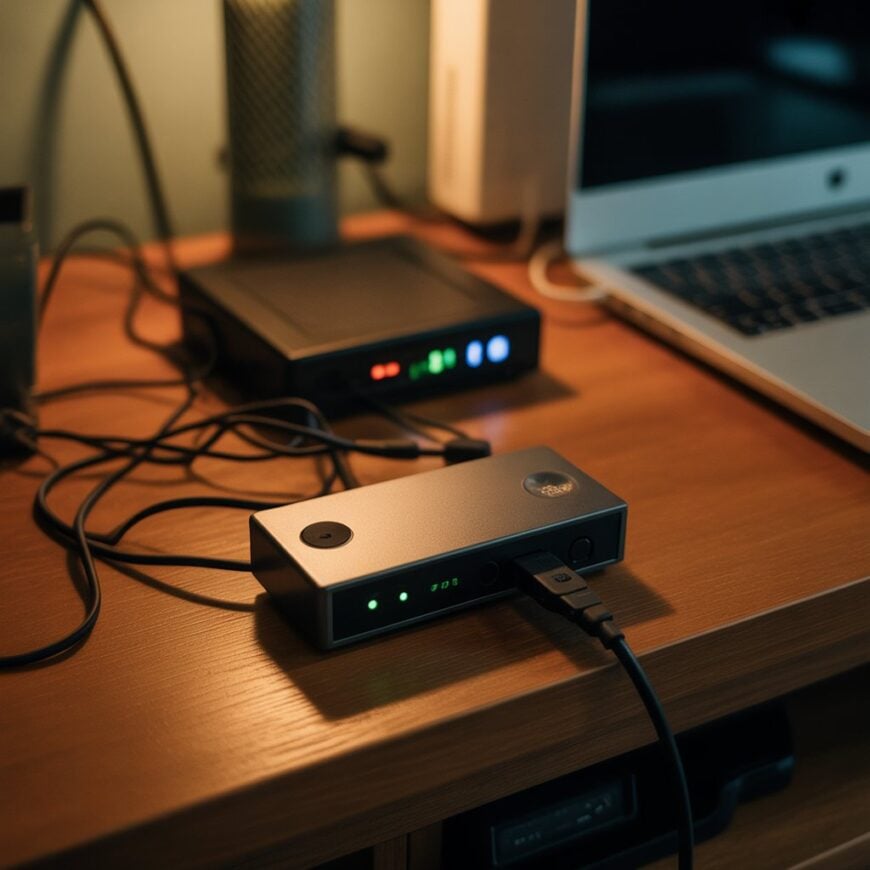
That low, constant hum in your home isn’t just background noise; it’s your anxiety showing up as electricity. When worry is in charge, you tend to leave devices plugged in and powered “just in case.”
Chargers stay in outlets with nothing attached. Computers run overnight. Small appliances sit ready, humming quietly in the background.
Over time, this creates a constant soundscape of buzzing and whirring you barely notice—but your nervous system does.
A calmer home has pockets of true quiet when things are turned off and unplugged. Letting some devices fully rest can subtly help you power down too.
8. Unfinished home projects scattered around the house
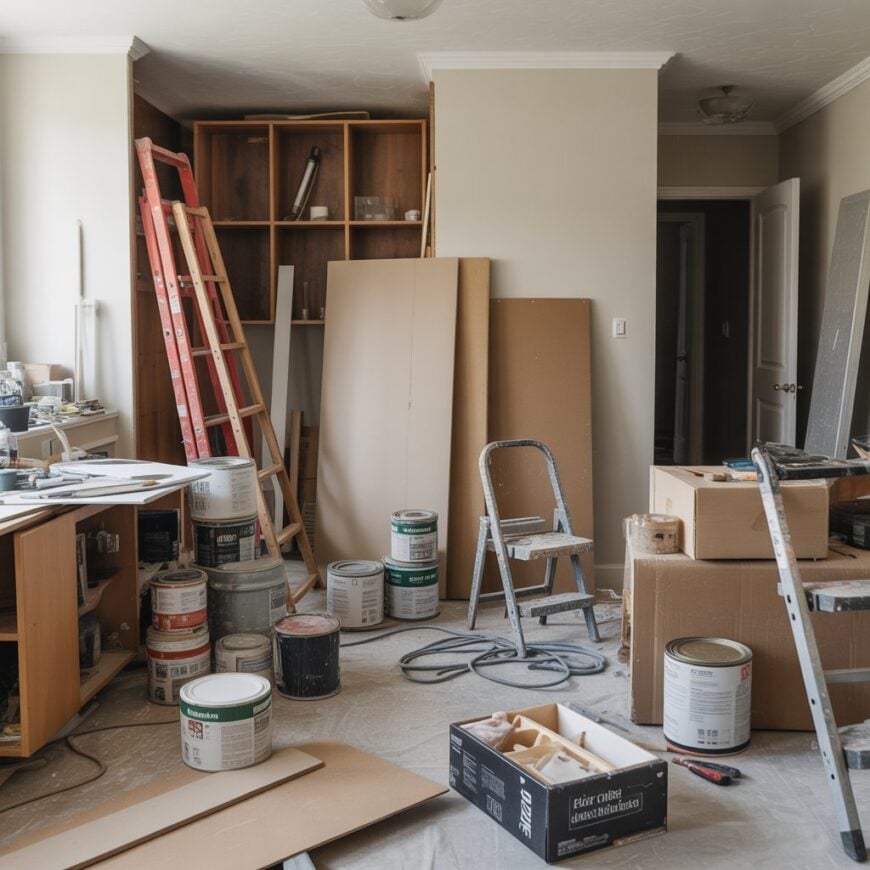
Half-painted walls, missing trim, a box of tiles waiting in the hallway—unfinished projects quietly drain your mental energy. Each one represents a decision you started but couldn’t complete.
Anxiety makes long, multi-step tasks feel overwhelming. You begin with enthusiasm, then stall when choices pile up: colors, materials, next steps. So the brush, samples, and tools linger in plain sight.
Your brain treats every unfinished project as an open tab. Walking past them becomes a daily reminder of “not done yet.” That weight builds, making it even harder to restart.
Soon, your home feels more like a construction zone than a place to exhale.
7. Rooms that feel cramped with no clear pathways

If moving through your home feels like dodging obstacles, anxiety may have arranged your furniture. Pieces get pushed into convenient spots instead of thoughtful ones, blocking natural walkways.
Clear paths need space—about three feet—to move easily. When every surface and gap is filled, you end up squeezing sideways between chairs, tables, and storage.
This cramped layout creates physical tension that mirrors mental stress. You’re constantly navigating around your own belongings.
Rooms then feel smaller than they are, more like cluttered corridors than open spaces. A calmer layout leaves breathing room, so you can walk freely instead of weaving through a maze.
6. A bed facing the wall instead of a window or open space

A bed pushed up to a wall facing away from windows can feel like a bunker. Anxiety often prefers this arrangement because it feels “safer”—solid behind you, minimal exposure ahead.
But this defensive setup can make your bedroom feel cramped and closed. You sacrifice natural light, fresh perspective, and a sense of openness in exchange for perceived security.
Over time, waking up to a wall instead of light or space can weigh on your mood.
Shifting the bed to face a window or open area, while still allowing a view of the door, can gently retrain your brain toward safety and ease.
5. Reflective surfaces like mirrors positioned to create uneasy reflections

Mirrors can double light and space—or double your discomfort. When they’re placed in anxious, unplanned spots, reflections feel unsettling instead of uplifting.
A mirror directly facing your bed can startle you at night or make you feel watched. Hallway mirrors that reflect long, empty corridors exaggerate the emptiness.
Mirrors that bounce clutter, unmade beds, or messy corners don’t help; they multiply the chaos.
When mirrors face each other, they create endless, dizzying reflections that overwhelm rather than expand.
You should feel better when you catch your reflection, not tense. Thoughtful placement turns mirrors into allies, not stress amplifiers.
4. Furniture placed in a way that blocks natural light
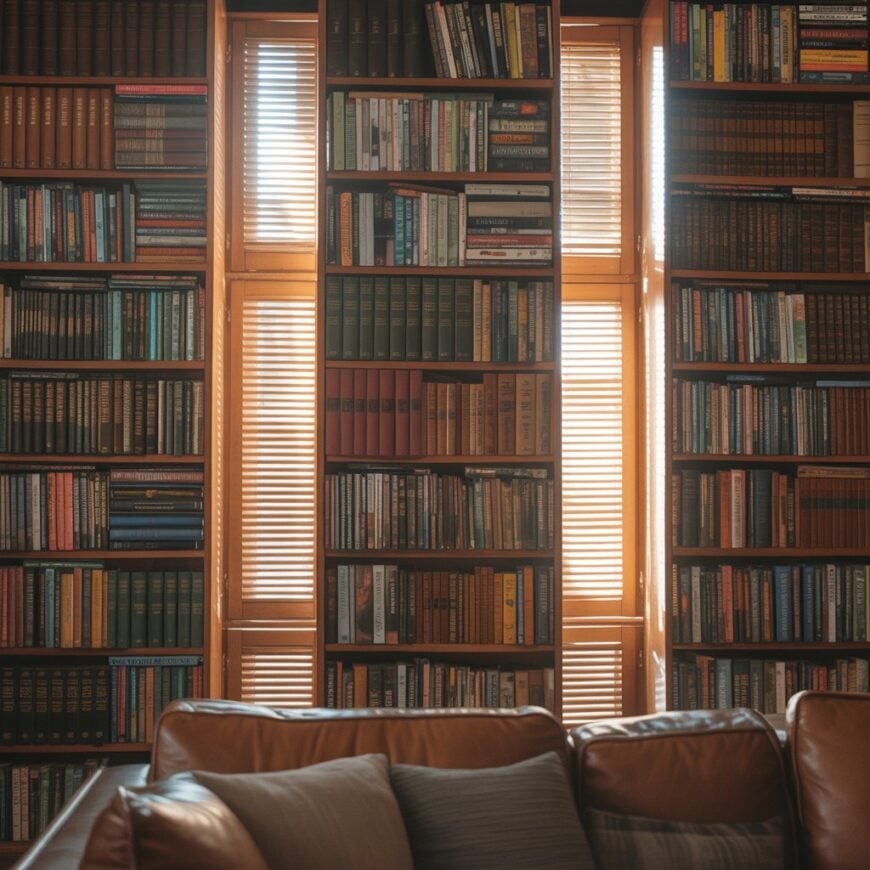
When big furniture parks in front of windows, your rooms pay the price. Anxiety often prioritizes “where it fits” over “what feels good,” so couches, beds, or shelves end up smothering the light.
Blocked windows dim the entire room, making it feel smaller, heavier, and more closed in. You may notice you turn on lamps even during the day.
That constant dimness can drag on your mood and energy levels.
Revisiting your layout with light in mind—pulling pieces back, lowering their height, or shifting them aside—can instantly change the room’s emotional temperature from stuffy to breathable.
3. Harsh, flickering overhead lighting that feels overwhelming
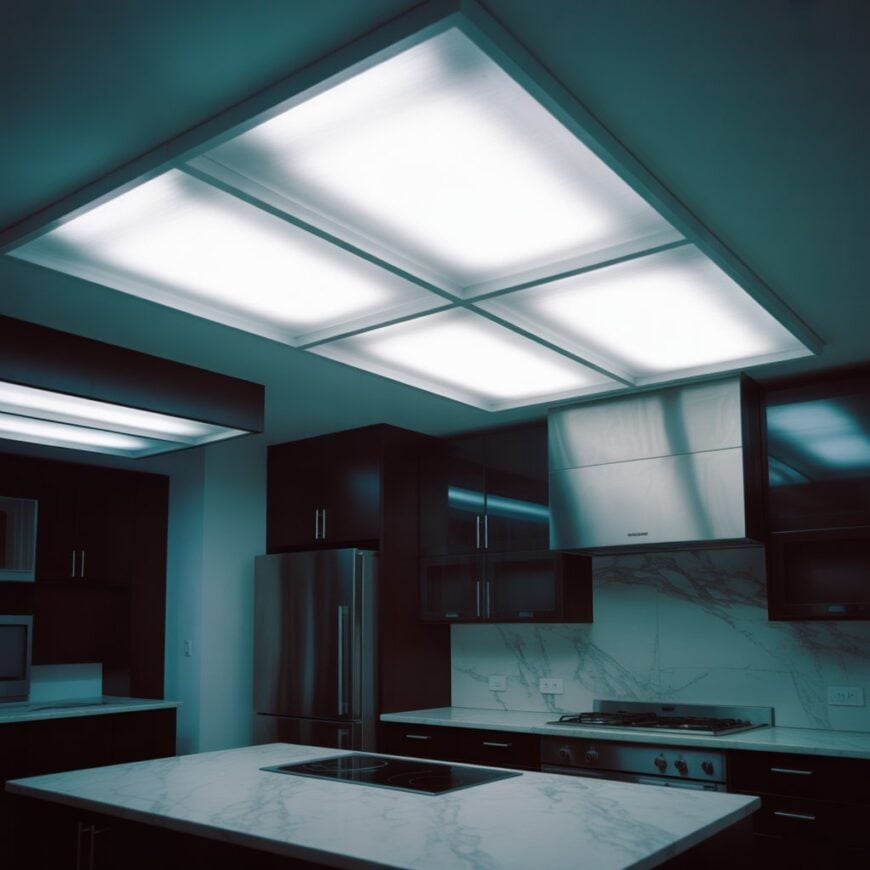
Anxiety loves “maximum brightness,” but your nervous system doesn’t. Relying only on strong overhead lights creates a harsh, flat atmosphere that feels more like a big-box store than a home.
Flickering bulbs or buzzing fixtures make it worse, adding constant micro-irritations that strain your eyes and patience.
Without softer lamps or layered lighting, there’s no way to adjust for evenings, relaxing, or winding down. Everything is on or off—no in-between.
This kind of lighting keeps your body in daytime mode long past sunset. Gentle, adjustable light sources help signal safety, rest, and calm instead of relentless alertness.
2. Multiple piles of unfolded laundry in plain sight

Clean laundry sitting in baskets feels harmless—until it’s everywhere. Anxiety turns a small chore into a huge mental mountain, so folding gets delayed “until later.”
Baskets land on the bed, sofa, chairs, and floors. Soon you’re digging for outfits instead of opening drawers.
Visually, the piles read as clutter and unfinished work. Each time you see them, you get a tiny jolt of guilt or avoidance.
This isn’t laziness; it’s overwhelm. Your brain is already overloaded, so one more decision—fold or not—gets pushed aside.
Tackling even one small pile can create a surprising sense of relief and control.
1. Cluttered countertops that never seem to get cleared

Counters become the “holding zone” for everything anxiety doesn’t know what to do with. Keys, mail, chargers, bottles, bags—if it’s undecided, it lands on a flat surface.
You may clear them once, only to see them refill almost immediately. Without designated homes for everyday items, the default drop zone is always the kitchen or bathroom counter.
Over time, these surfaces stop functioning. Cooking, getting ready, or cleaning feels harder because you’re constantly working around stuff.
The visual noise keeps your brain buzzing. Creating simple landing spots—trays, bins, hooks—helps break the cycle and lets your countertops finally breathe.


